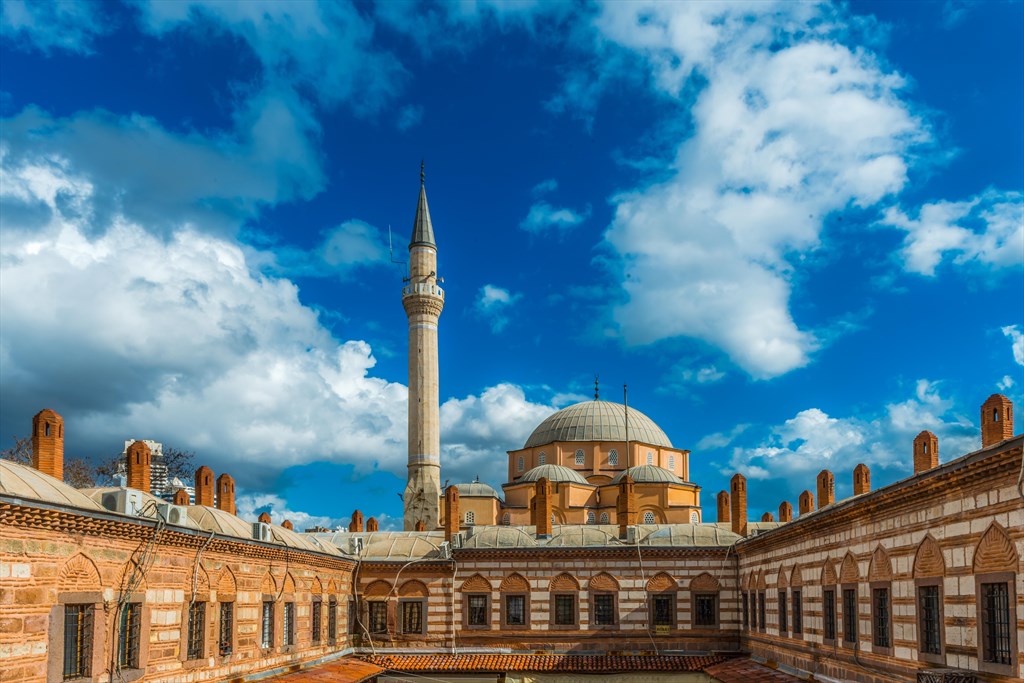Hisar Mosque
'Whoever goes in there will be safe.' Hisar Mosque welcomes you with a verse taken from the Surah Âli Imran on the gold leaf inscription above its door. It is the only place where you can find calmness and tranquility in the non-stop activity of Hisaronu.
It takes its name from the fortress that was once located at the mouth of the port of Izmir, and the castle we have transferred to you as the Harbor Castle. The inscription on the construction has not survived, but it is claimed that the mosque was built by a man named Mullah Yakup in the thousandth year of the Migration (1591/92) or in 1006 Hijri (1597/98) at the end of the 16th century. Evliya Çelebi, who came to İzmir in 1671, mentioned the inscription in his Seyahatname stating that the Hisar Mosque was built in the year 1000 Hijri. Oikonomos, who wrote the history of Izmir in 1817, claimed that the mosque was transformed from a Latin church.
The large dome in the middle of the Hisar Mosque, whose minaret has a single balcony, stands on eight elephants. There are three large domes on the sides, three smaller domes further back, and 7 small domes in the last congregation area. The courtyard of the mosque is enriched with a small fountain cooled with snow in rococo* style and a marble fountain embedded in the wall. In the outer courtyard where you can see florists and prayer beads, there was a library and a muvakkithane**. The two fountains in the outer courtyard belong to the 19th century.
Hisar Mosque, the largest mosque in the city during the Ottoman period, also has the richest stucco decorations among Izmir mosques. When you look at the wall surfaces, altar, arches, inside the dome, windows, and capitals, you will notice the curved branches, leaves, flowers, bunches of grapes and star motifs.
The most important figure associated with the mosque is Mehmet Rakım Elkutlu, one of the greatest composers of 20th century Turkish music, who was also the imam-orator of the mosque. If you follow our route, you can also see the Rakım Elkutlu house.
The mosque was frequently repaired after severe earthquakes in the 19th century. Its minaret, which was destroyed after an earthquake in 1927, was built by Kazım (Dirik) Pasha, the then Governor of İzmir. The mosque, which was repaired after the earthquake in 2003, was last restored in 2017.
* The name given to the flamboyant and ornamental style of decoration that emerged in France in the 18th century.
** It is the place where Muvakkits determine the time and time of prayer and do small-scale astronomy studies.

.jpg)
.jpg)
.jpg)
.jpg)
.jpg)
.jpg)



.jpg)
.jpg)
.jpg)
.jpg)
.jpg)
.jpg)


Comments
No comment left, would you like to comment?